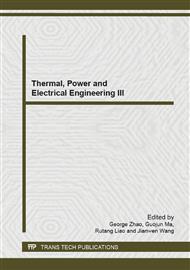p.442
p.447
p.451
p.456
p.462
p.469
p.475
p.479
p.485
Effects of pH on Hg0 Re-Emission in WFGD
Abstract:
Gaseous oxidized mercury (Hg2+) in the flue gas is soluble in water and can be captured effectively by Wet flue gas desulfurization (WFGD) system. But in some extent Hg0 re-emission happens due to the reduction of absorbed Hg2+, and the pH of slurry is an important factor affecting Hg0 re-emission. In this study, the theoretical formulas of slurry pH were derived through the conventional solution theory and then were used to evaluate the factors determining the pH of slurry. A series of laboratory experiments were carried out under N2, CO2 and O2/N2 atmosphere to measure the Hg0 re-emission tendency at different pH values. The results show that the higher the pH, the less Hg2+ reduced by S(IV), resulting in the decrease of Hg0 re-emission. Under N2 atmosphere, the Hg0 re-emission was mild at pH>4 while it was dramatic at pH<4. Under O2/N2 atmosphere, the addition of O2 extended the time span of Hg0 re-emission at low pH and increased Hg0 re-emission unexpectedly in the latter part of the experiments at high pH. CO2 atmosphere almost did not affect Hg0 re-emission because of its little effect on the slurry pH.
Info:
Periodical:
Pages:
462-468
Citation:
Online since:
June 2014
Authors:
Keywords:
Price:
Сopyright:
© 2014 Trans Tech Publications Ltd. All Rights Reserved
Share:
Citation:


